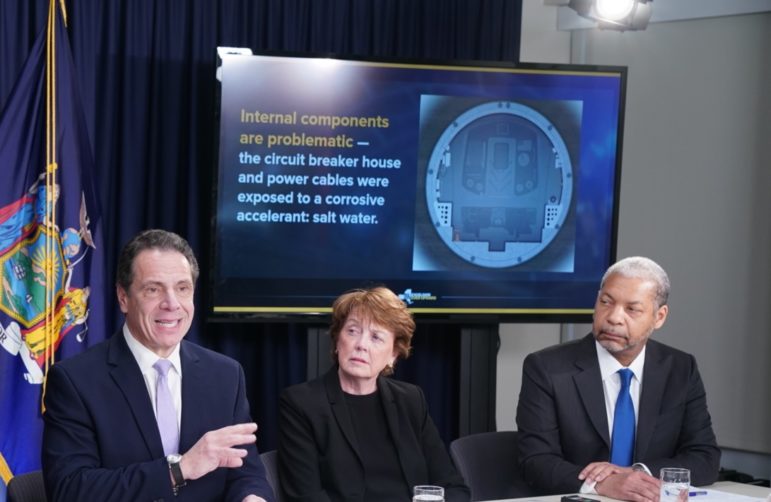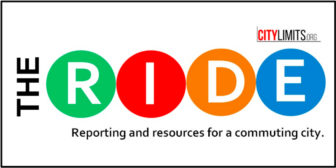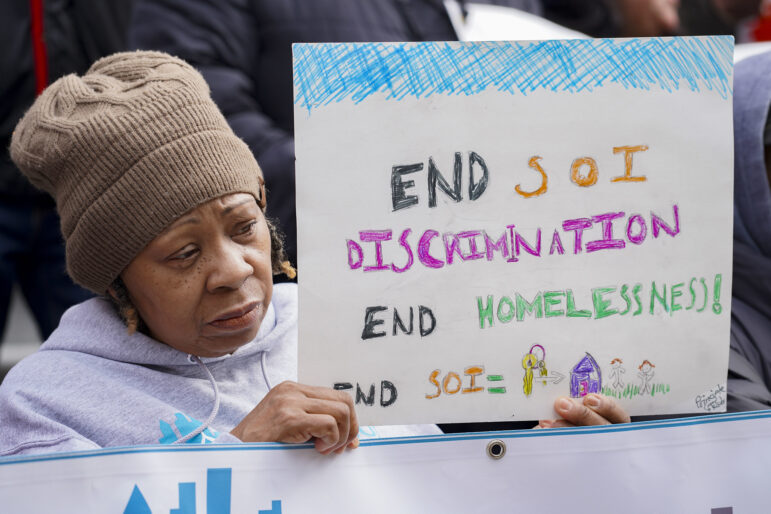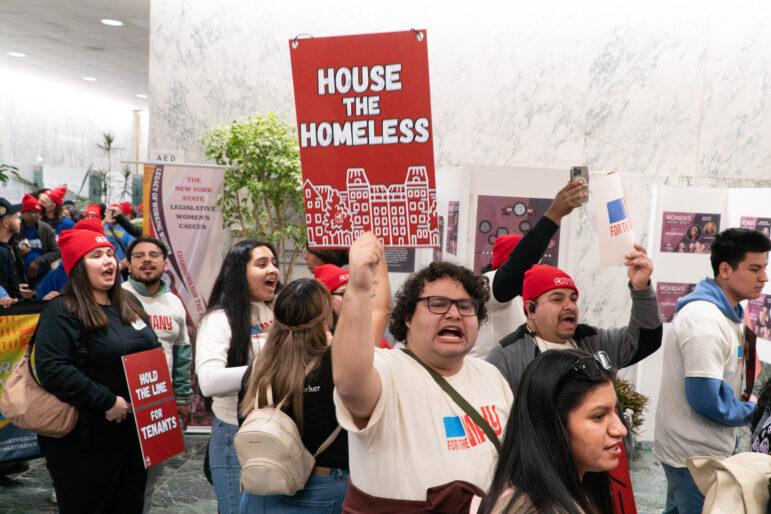
Office of the Governor
Gov. Cuomo announces the new approach to the L-train project as Mary Boyce, the dean of The Fu Foundation School of Engineering and Applied Science at Columbia University, and Lance Collins, the Joseph Silbert dean of Engineering at Cornell University look on.
Gov. Andrew Cuomo’s surprising announcement Thursday that L train service won’t shut down in April for repairs—as the MTA and city officials have been planning extensively for more than two years—likely brought a sense of relief for many Brooklyn commuters.
But the governor’s plan, in which the L train will continue to run as repairs are made on nights and weekends instead, also raises questions: Namely, why didn’t officials come up with such a solution earlier, before the years of public hearings and preparation for a complete, more than year-long shutdown?
The optics of Thursday’s announcement, in which a plan devised in only a few weeks by Cuomo’s group of engineering experts replaced years of careful planning by the MTA, undermines the credibility of the transportation authority at a time when the agency is already struggling with its public image, experts say. It comes at a particularly crucial moment for the MTA, as the agency looks to drum up support from state lawmakers to fund its multi-billion dollar Fast Forward plan to fix the subways.
“If this is technically feasible, it’s a good question why the MTA didn’t consider it a while ago,” says Jon Orcutt, director of the transportation group TransitCenter. “The reality is that the MTA is going to Albany to ask for a huge amount of money right now to rebuild the system, and this is not a good time to take that credibility hit.”
Cuomo says his solution is the product of “fresh eyes” and “innovative engineering methods” that have yet to be used on a project like this in the United States. The new plan will relegate repair work on the Canarsie tunnel to nights and weekends only, when one tube of the tunnel will remain open to allow L train service to continue.
“Now, the MTA has done a very good job, the city has done a very good job in trying to alleviate the problems with the L train closing. A lot of people worked very hard and I applaud them,” the governor said during Thursday’s announcement—before going on to declare that his solution was better. “I had the best experts on the planet look at it, and this is the best way that it can be done,” he said.
The move, Orcutt says, raises the question: “What is going on inside the MTA?”
“If the governor has to directly intervene to force innovation, that’s not good,” he says.
Others expressed similar sentiments, including former City Council Speaker Melissa Mark-Viverito, who’s currently running for public advocate.
“Of course everyone wants the subway fixed quickly and running smoothly, but the MTA and the governor owe New Yorkers the truth about why this new plan came so late in the game,” she said in a statement. “After two years of being told one story, New Yorkers deserve to know what systematic failures led to a shutdown being deemed necessary before all options were explored.”
MTA Chairman Fernando Ferrer offered up an answer to this question Thursday–namely, that the engineering techniques proposed by Cuomo’s experts are so new and unique that the MTA didn’t consider them an option.
“So you might ask, well why wasn’t this approach considered earlier?” he said. “The answer is that the integration of these approaches, and there are several, and the technology has not been previously applied in the context of a rehabilitation project.”
But not everyone is buying that explanation.
“You’ll pardon transit riders for being skeptical that a last-minute Hail Mary idea cooked up over Christmas is better than what the MTA came up with over three years of extensive public input,” John Raskin, director of the transit advocacy group Riders Alliance said in a statement.
“Actual transit professionals, who owe nothing to the governor or the MTA, should evaluate whether this is sound engineering or a political stunt that will ultimately leave riders in the lurch,” he added.
Though Cuomo’s plan was presented Thursday as a mostly done deal, the governor told reporters during a conference call Friday morning that it still needs to be approved by the MTA board, according to reports.











2 thoughts on “Abrupt Reversal on L Train Shutdown Raises Credibility Issues for MTA, Experts Say”
Pingback: Cuomo's L train maneuvers create a crisis of credibility - Second Ave. Sagas :: Second Ave. Sagas
Last Tuesday’s MTA Emergency Board meeting called by Governor Cuomo ended up being window dressing for his proposed new NYC Transit Canarsie subway l Line tunnel design. At the end of the day, there were more questions than answers. Six years after Super Storm Sandy, why is this now an emergency? MTA HQ, Board members, NYC Transit, NYCDOT managers and engineers still need more time to review and comment on this “new design” along with budget, environmental and schedule impacts for tunnel repairs. The same holds true for both the MTA & Federal Transit Administration independent engineering oversight consulting firms.
It makes no sense to reassign management of this project from NYC Transit to MTA Office of Capital Construction. NYC Transit has already successfully managed several Super Storm Sandy federally funded tunnel projects. For the most part, they were completed on time, within budget, accompanied by few design or change orders. Contrast that with MTA’s Office of Capital Construction’s track record. East Side Access to Grand Central Terminal, if all goes well with the most recent recovery schedule, will be completed ten years late and $8 billion more than the original $3.5 billion budget. Check out the original 2006 MTA/FTA Full Funding grant agreement and read it. Second Avenue Subway Phase One and Hudson Yards #7 subway extension both suffered from delays, budget and change order issues. Capital Construction currently has their hands full trying to complete ESA by December 2022 and begin Second Avenue Subway Phase 2.
Why should NYC Transit hire yet another engineering consulting firm to perform an independent review of Governor Cuomo’s proposed redesign? This just duplicates the work of the MTA’s existing Capital Program Oversight Committee independent engineer. The same holds true for the FTA’s existing independent engineering consultant, who is usually assigned to monitor any MTA or NYC Transit federally funded capital improvement project over $100 million. Paying for another engineering consulting firm is a waste of scarce financial resources.
Several hundred million was previously provided under a Federal Transit Administration Super Storm Sandy Recovery and Resiliency grant in 2016. Based upon the board presentation, questions, answers and discussions, the MTA will probably have to update FTA’s previously approved project Environmental Impact Statement. It is clear that the scope of work, project schedule, completion date, budget and useful life of investments will be different from the original grant commitments. How will the MTA inform FTA of these changes when they have been furloughed? The MTA is legally required as part the master grant agreement with FTA to provide monthly financial and milestone progress reports. This includes any changes to scope of work and contract change orders over $100,000. This is accomplished under the FTA Transit Award Management System known as TRAMS. MTA and NYCDOT provide these reports on many other active capital projects and programs worth over $12 billion. When will the MTA met with FTA and its own independent engineering oversight consulting firm to provide a presentation on the new “design” changes?
As these developments continue to unfold, I would not be surprised when the MTA and FTA respective Office of Inspector General, NYC & NYS Comptroller’s Offices begin to take an interest. Sooner or later they will initiate their own respective review to see if there is any waste, fraud or abuse of taxpayers dollars. Their respective audits and reports will make interesting reading. As they say in Brooklyn, development of this project is beginning to sound fugazy.
(Larry Penner is a transportation historian, advocate and writer who previously worked 31 years for the U.S. Department of Transportation Federal Transit Administration Region 2 NY Office.)